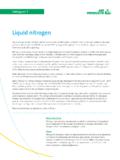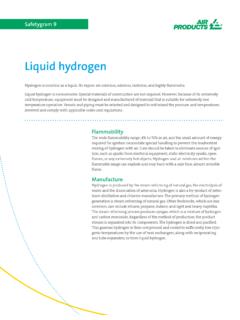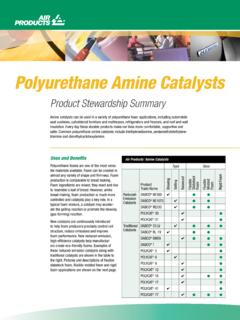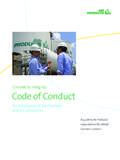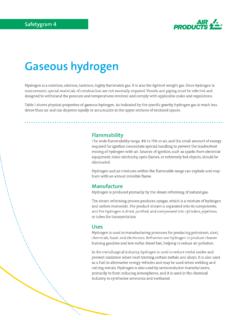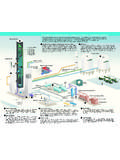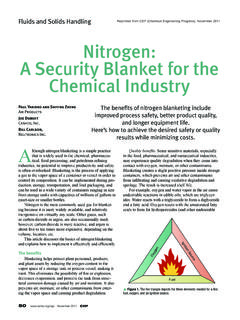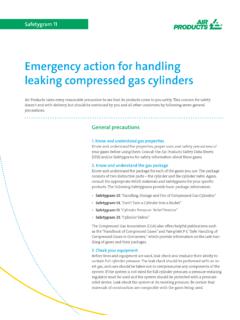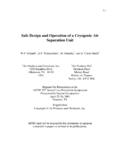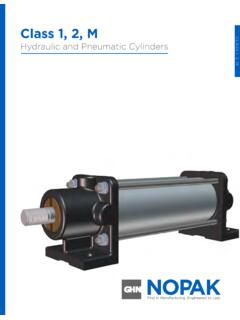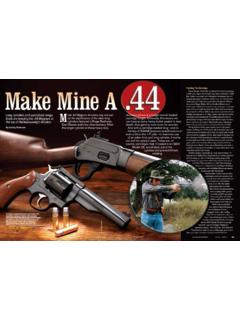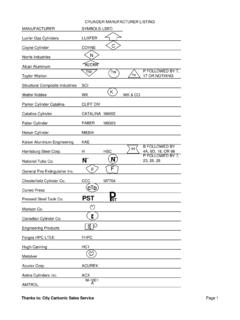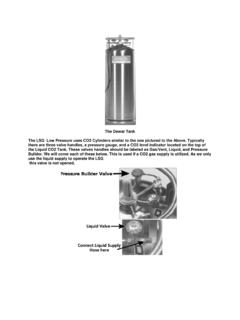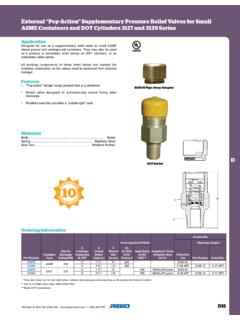Transcription of Handling, storage, and use of compressed gas …
1 Air Products would like to ensure the safe handling of our products. As our customer, you need to share in the responsibility for safe handling, storage, and use of our , storage, and use of compressed gas cylindersFollow these seven general safety recommendations:1. Know and understand the properties, uses, and safety precautions before using any gas or gas mixture. Consult the Air Products Safety Data Sheet (SDS) and Safetygrams for safety information on the gases and equipment you will be Determine the appropriate equipment required to use the product and know how to safely operate the Be aware of potential hazards and develop plans to cover possible emergencies.
2 Use emergency drills to practice implementing these plans. Inform local hospitals, fire departments, and other emergency response organizations of the gases in use so that they, too, will be prepared in the event of an Provide personal protective equipment (PPE) and the required training for its use. Require personnel to wear the proper PPE for each task. Locate other safety equipment such as fire extinguishers, eye wash stations, and showers at appropriate locations. Thoroughly inform everyone about the hazards of the gases they are using and how to respond to an Follow all national, state, and local regulations pertaining to the storage, use, and disposal of compressed gases and cryogenic liquids.
3 This document highlights the recommendations set forth in ISO Standard 11625, Gas Cylinders Safe Handling. In the United States, this document is published by the compressed Gas Association as Pamphlet P-1, Safe Handling of compressed Gases in Containers, and has been incorporated into the regulations, making the contents of the document legal requirements in the United States, not recommendations. Other regional organizations such as the Asian Industrial Gases Association (AIGA), Safetygram 10 Figure 1: Typical Cylinder Hand Trucks the European Industrial Gases Association (EIGA), and the National Fire Protection Association (NFPA) also provide guidance for the storage and use of compressed gas If you are unfamiliar with the hazards associated with a particular gas, contact your supplier for additional Use appropriate equipment when handling portable cylinder banks.
4 They have a high center of gravity, and extreme care must be taken during their movement. Portable banks may fall over when being moved if they are stopped suddenly by an object or crack in the gas cylinders should be handled only by those familiar with the hazards and who are trained in the proper handling techniques. Cylinders containing compressed gases are heavy and awkward to move. Improper han-dling of compressed gas cylinders can result in sprains, strains, falls, bruises, or broken bones. Other hazards such as fire, explosion, chemical burns, poisoning, and cold burns could occur if gases accidentally escape from the cylinder due to mishandling. Take the following precautions to prevent injuries caused by the improper handling of compressed gas Drag or slide cylinders, even for short distances.
5 Drop cylinders or permit them to strike each other violently. Subject cylinders to mechanical shocks that may cause damage to their valves. Use cylinders as rollers for moving material or other equipment. Tamper with pressure-relief devices. Permit oil, grease, or other readily combustible substances to come in contact with cylinders, valves, or other equipment in oxidizer service. Remove any product labels or shipping hazard labels. Refill compressed gas cylinders. This is to be done only by qualified producers of compressed gases. Lift a cylinder by its cap using a sling or a magnet. Attempt to catch a falling cylinder. A LWAYS Move cylinders using a suitable hand truck or cart.
6 (refer to figure 1) Leave the valve protection cap and valve seal outlet in place until the cylinder has been secured in place and is ready to be used. Secure cylinders when in storage, transit, or use. When returning cylinders to the supplier, properly close the cylinder valve, replace and secure any valve outlet seals, and properly install the cylinder cap. Use a cylinder cage or cradle to lift a cylinder. Use the proper PPE for cylinder handling. Wear safety glasses with sideshields, leather gloves, safety shoes, and other appropriate equipment. Use extreme care and restrict the movement of portable banks to localize movement on clean, smooth, level stationary surfaces.
7 Use two people for localized manual movement of a portable bank. Stay out of the bank s travel path. Also, be aware of escape routes should the bank get out of control or start falling. If a smooth, level surface is not available over which to move the portable bank, use a forklift, crane, or other appropriate moving 2: The Correct Way to Safely Check a SystemStorageTake the following precautions to prevent injuries caused by asphyxia-tion, fire, explosion, high pressure, and improper handling of compressed gas Allow storage temperature to exceed 125 F (52 C). Permit smoking or open flames in oxidizer or flammable gas storage areas.
8 Expose cylinders to corrosive materials such as ice melting LWAYS Store cylinders in accordance with ISO Standard 11625 or CGA Pamphlet P-1. Store cylinders upright with valve outlet seals and valve protection caps in place. See Air Products Safetygram-14, Don t Turn a Cylinder Into a Rocket. Secure cylinders when in storage, transit, or use. Store cylinders in areas designated for that purpose. Segregate full and empty cylinders. Store cylinders in a dry, cool, well- ventilated, secure area protected from the weather and away from combustible materials. Ensure that there is adequate separation from combustibles as specified by national regulations.
9 Monitor the atmosphere in areas where gases may vent and collect. Use a first-in, first-out (FIFO) inventory system to prevent full containers from being stored for long periods of use of compressed gasesTake the following precautions to pre-vent injuries caused by the improper use of compressed Attempt to mix gases in a cylinder. Insert an object ( , wrench, screw driver, etc.) into valve cap openings to remove a stuck cylinder cap. Doing so may damage or open the valve, causing a leak to occur. Use an adjustable strap wrench to remove over-tight or rusted caps. Allow any part of a cylinder to be exposed to temperatures exceeding 125 F (52 C).
10 Permit cylinders to become part of an electrical circuit. Use oxygen as a substitute for compressed air. Strike an arc on a cylinder. Return product into a cylinder. Introduce another product into a cylinder. Store only the amount of compressed gas required for the specific application. Store cylinders away from heavily traveled areas and emergency exits. Provide adequate access for cylinder handling. Visually inspect stored cylinders on a routine basis, or at least weekly, for any indication of leakage or problems. Restrict access to cylinder storage areas. Protect cylinders from wet or damp ground. Use cylinder color as a primary means to identify the contents of a cylinder.
